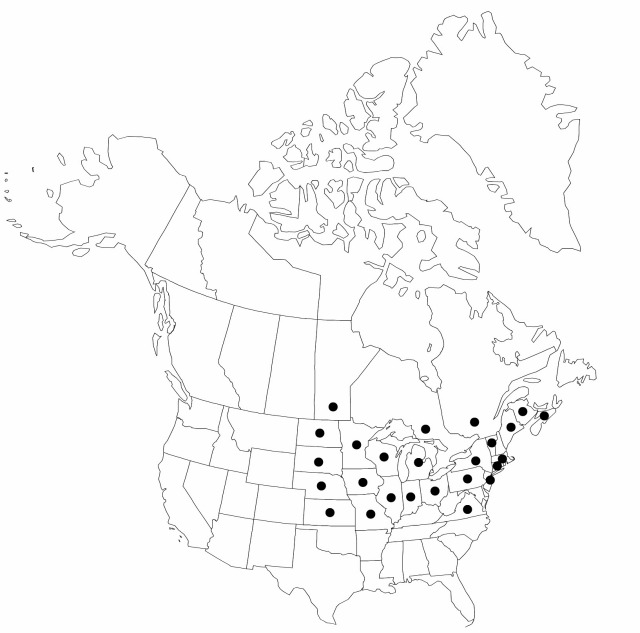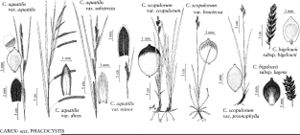Carex aquatilis var. substricta
in H. G. A. Engler, Pflanzenr. 38[IV,20]: 309. 1909.
Culms 35–100 cm, angles glabrous or scabrous. Leaves: basal sheaths leafless, usually redbrown; blades amphistomic, 5–8 mm wide, papillose on both surfaces. Inflorescences: peduncle of proximal spike not more than 4 cm; proximal bract longer than inflorescence, 4–8 mm wide. Spikes erect; proximal 2–6 spikes pistillate, 4–6 cm × 4–7 mm, base cuneate or attenuate; terminal 1–3 spikes staminate. Pistillate scales pale redbrown with narrow redbrown marginand broad pale midvein. Perigynia pale-brown, veinless, obovoid, 2.6–3.2 × 1.5–2.2 mm, apex rounded; beak pale-brown, thickened, not more than 0.2 mm. 2n = 76, 77.
Phenology: Fruiting Jul–Aug.
Habitat: Marshes, shallow water along shores, usually in neutral or calcareous substrates
Elevation: 0–1000 m
Distribution

Man., N.B., N.S., Ont., Que., Conn., Ill., Ind., Iowa, Kans., Maine, Mass., Mich., Minn., Mo., Nebr., N.J., N.Y., N.Dak., Ohio, Pa., S.Dak., Vt., Va., Wis.
Discussion
Populations of Carex aquatilis var. substricta from Minnesota to Massachusetts tend to have very pale scales with a very broad, pale brown midvein, distinctly obovoid perigynia, and broad pistillate spikes that are rarely staminate at the apex. These populations tend to occur on neutral or calcareous substrates (fens) rather than the more acidic marshes favored by var. aquatilis. The two varieties intergrade where they come into contact.
Selected References
None.
Lower Taxa
"shortened" is not a number."not undefined" is not a number.
